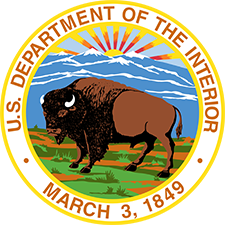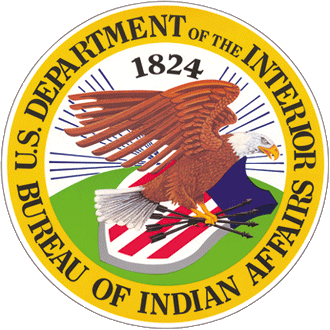Strengthening Indian Country
The Biden-Harris administration’s Investing in America Agenda encompasses a broad range of policies aimed at revitalizing the economy, creating jobs, and helping communities. Through historic legislation, including the American Rescue Plan, Bipartisan Infrastructure Law, Inflation Reduction Act, and Great American Outdoors Act, the Bureau of Indian Affairs is deploying record investments to advance Tribal climate resilience and provide modern wastewater and sanitation systems, cleaning drinking water, reliable and affordable electricity, and good paying jobs in every Tribal community.
Tribal communities have too often been left behind and not given a seat at the table for the decisions that impact them and their communities, including project development and funding opportunities. The Investing in America Agenda seeks to address longstanding challenges and unique circumstances affecting Indian Country by promoting Tribal self-sufficiency, cultural preservation, and economic prosperity.
 The BIA created an interactive platform to track projects funded through the Investing in America Agenda across Indian Country. Look up a project using the filters categorizing projects by funding source, year, and type.
The BIA created an interactive platform to track projects funded through the Investing in America Agenda across Indian Country. Look up a project using the filters categorizing projects by funding source, year, and type.
"Historic investments in Indian Country over the past three years, which were long overdue, have made a real difference in people’s lives. These investments from the President’s Investing in America Agenda support our efforts to revitalize Tribal cultures and communities and help conserve and restore important ecosystems that benefit all Americans,” Assistant Secretary for Indian Affairs Bryan Newland
Addressing Climate Change
Alaska Native villages are at risk of severe infrastructure damage due to climate-related environmental impacts, including sea-level rise, coastal erosion and extreme weather events. Tribal communities in the contiguous 48 states are at risk of similar threats plus threats from flooding, drought and wildland fire. A 2020 BIA study estimated that up to $5 billion will be needed over the next 50 years to address Tribal relocation infrastructure needs in response to climate change impacts.
Tribal Climate Resilience
The BIA's Tribal Climate Resilience branch is designed to help Tribal nations adapt to climate threats, including relocating infrastructure. Indigenous peoples in the U.S. are among the communities most affected by severe climate-related environmental threats, which have already negatively impacted water resources, ecosystems and traditional food sources in Native communities in every corner of the U.S. Additionally, the TCR Annual Awards Dashboard shows a map of all annual award program recipients since 2011.
“Our Tribe is very excited about this Climate Resilience Grant that enables us to relocate our Fishery lab off the shoreline of Sequim Bay to an upland site. Restoring our natural habitat and adjusting from past poor development practices is how our cultural practices can be implemented to counter the effects of climate change,”
Jamestown S’Klallam Tribe Chairman W. Ron Allen
Voluntary Community-Driven Relocation
Funding from the Bipartisan Infrastructure Law supports the new Voluntary Community-Driven Relocation Program, which provided funding to 11 Tribes to plan and execute relocation, managed retreat, and protect in-place efforts to safeguard homes and communities from sea level rise, erosion, and other climate-related environmental threats. The TCR Community Driven Relocation webpage illustrates the projects implemented to mitigate climate risks for Native communities in every corner of the country, even in your backyard.
The Newtok Village, located on the Ninglick River in Alaska, is experiencing progressive coastal erosion from ocean storms and degrading permafrost. Multiple erosion studies conclude that there is no cost-effective way to halt this process and that the people of Newtok must relocate to a new site. At the current erosion rate of approximately 70 feet per year, the river is expected to threaten structures within two years and the village's critical infrastructure within four years. Mertarvik is the site of the new village, located approximately nine miles across the Ninglick River from Newtok. The new village site has roads but only a handful of homes.
The Native Village of Napakiak, located on the Kuskokwim River in Alaska, is experiencing severe erosion, threatening the school, fuel farm, water supply well, airport, homes, and other critical infrastructure. Severe weather, storm surges, and flooding are also significant concerns. The ongoing erosion is estimated to be 25-50 feet per year. Most of the current critical infrastructure is expected to be destroyed by 2030. The village has comprehensive plans for managed retreat and relocation, but implementation has been delayed by lack of funding.
The Quinault Indian Nation, located on the Olympic Peninsula in Washington, is relocating its Taholah Village. Taholah lies at the confluence of the Quinault River and the Pacific Ocean and is particularly vulnerable to sea level rise, storm surges, and river flooding. The village also faces tsunami hazards from the more frequent distant earthquakes on the Pacific rim and the more destructive local tsunamis caused by earthquakes near the western coast. Still, the lack of funding has made relocation a piecemeal process. The Tribe identified an area at a higher elevation for relocation, and efforts are underway to begin the relocation process.
Enhancing Communities' Quality of Life
Tribal Electrification
The Department launched the Tribal Electrification Program with an overall $150 million investment from the Inflation Reduction Act to help Tribal communities electrify homes. This investment is a critical step toward the goal of electrifying all homes in Indian Country with renewable energy sources and advances the Biden-Harris administration’s work to reach a carbon-free electricity sector by 2035. Early 2024, the Department announced $72 million from the Agenda to help Tribal communities electrify homes.
More than 16,000 Tribal homes and 54,000 residents lack electricity, with a majority of unelectrified homes located in the Navajo Nation and Hopi Tribe. By recognizing that each Tribe has its own energy- and electrification-related needs and implementation capacity, the Tribal Electrification program will meet the unique needs of individual Tribal communities.
Orphaned Wells on Tribal Lands
During the long history of oil and gas development in the United States, when oil wells are no longer in use they are “plugged” and sealed by pouring cement down the well shaft. An oil or gas well becomes “orphaned” when there is no longer a responsible operator available to do this work. Many of these unplugged “orphaned wells” are still present in Indian Country, posing risks to human health and contamination of the soil, water, and air.
Funded by the Bipartisan Infrastructure Law, the Tribal Orphaned Well Program has issued over $150 million in grants to Tribes to assess, plug, and remediate orphaned wells on Tribal land. Since 2022, over $40 million has been provided to assess and plug 400 orphaned wells through the Tribal Orphaned Well Program.
Upholding Treaty Rights and Community Well-being
On October 1, 2024, the Office of the Assistant Secretary for Indian Affairs announced nearly $10 million to provide critical rehabilitation at Tribal fishing sites along the Columbia River. This investment will help build restrooms and showers, fish cleaning and waste management stations, dishwashing facilities, and fire hydrants, as well as make lighting and safety upgrades. The funding will support Tribally led efforts to restore healthy and abundant populations of salmon and other native fish in the Columbia River Basin.
In September 2023, the Biden-Harris Administration issued a presidential memorandum to advance these efforts and an agreement to restore salmon populations in the Upper Basin. In December 2023, the Administration also announced a historic agreement to restore salmon populations in the Lower Basin, expand Tribally sponsored clean energy production, and provide stability for communities that depend on the Columbia River System for agriculture, energy, recreation, and transportation.
Restoring Ecosystems
Bison and Grasslands
American bison once numbered 60 million in North America, with the population anchored in what is now the central United States. Many Indigenous cultures, especially in areas where the species was most abundant, developed strong ties with bison and relied upon them for sustenance, shelter, and cultural and religious practices.
The Department has invested significant funding to support the restoration of bison populations and grassland ecosystems in Tribal communities through its Grasslands Keystone Initiative, part of a restoration and resilience framework.
Fish Hatcheries
Expanded by the Inflation Reduction Act, the Bureau of Indian Affairs Fish Hatchery Maintenance Program provides grants to Tribes to maintain and expand fish hatcheries and aquaculture on trust land, prioritizing projects that raise fish that are culturally-significant to Tribal communities, depleted, or endangered.
On October 3, 2024, the Departments of the Interior and Commerce held an event in Tulalip, Washington, to celebrate a $240 million investment to support fish hatcheries that produce Pacific salmon and steelhead, underscoring the Biden-Harris administration’s commitment to empowering Tribal Nations and fulfilling the federal government’s trust and treaty responsibilities. Fish hatcheries in the Pacific Northwest support essential subsistence, ceremonial and economic benefits for Tribal communities, as well as fulfilling Treaty-reserved fishing rights. The Bureau of Indian Affairs will partner with the Commerce Department’s National Oceanic and Atmospheric Administration to deliver this funding to regional Tribes.
Clean Drinking Water
"It's difficult to put into words exactly how we feel. To be able to finally have so many people have safe, potable drinking water is an incredible feeling. I often think about this milestone that we've reached; it's been a long time coming. It's cliche, but it comes down to the phrase, 'water is life.' Everything that Hopi does and is, is connected culturally and traditionally to water. It is always reflected in our prayers. We are fighting to preserve life in the form of water, and I think that really resonates,"
Hopi Tribal Chairman Timothy Nuvangyaoma
Water Sanitation, Irrigation, and Dam Safety
The BIA received $250 million from the Bipartisan Infrastructure Law to support Tribal dams and water projects to address irrigation, power systems, dam safety, and water sanitation.
The BIA is an important provider of water and electricity to the Tribal communities. One example is in Arizona, where more than $8 million is supporting the Hopi Arsenic Management Project to cover infrastructure upgrades necessary to connect three BIA-owned water systems with the regional water system funded by the Indian Health Service and EPA.
This investment is critical to address naturally occurring elevated arsenic concentrations in the groundwater wells of the area's water systems and bring clean, safe drinking water to people's houses.
Additionally, the BIA provides water service to Indian Reservations through 17 Congressionally-authorized irrigation projects that operate throughout the Western United States. Since 2022, the Bipartisan Infrastructure Law has provided funding to perform needed maintenance to enhance irrigation systems supplying water to over 316,000 acres of land.
In March 2024, Indian Affairs broke ground on the Oglala Dam Rehabilitation Project. The project protects downstream communities, improves dam safety, and restores an important local water supply for the Pine Ridge community.
Indian Water Rights
Indian water rights have been, and continue to be, a priority. To date, the Biden-Harris administration has allocated more than $3.4 billion to fund Indian water rights settlements, more than any other administration in history.
This includes more than $2 billion through the Bipartisan Infrastructure Law to help deliver long-promised water resources to Tribes, certainty to surrounding communities, and a solid foundation for entire communities that are dependent on common water resources.
“What happens in regards to the protection and preservation of water is of great importance. Importantly, moving forward, both the Choctaw and Chickasaw Nations will have a seat at the table in the protection of southeastern Oklahoma water resources for municipal and recreational use,"
Chief Gary Batton of Choctaw Nation
Additional Information
Related Pages
Contact Us
Department of the Interior 1849 C Street, N.W. MS-4660-MIB
Washington, DC 20240


